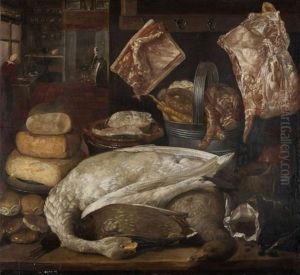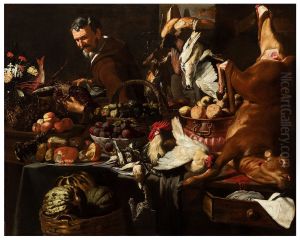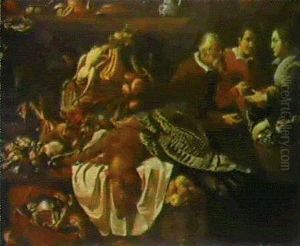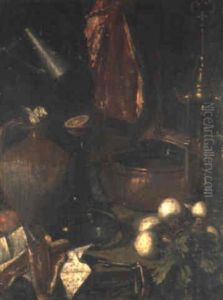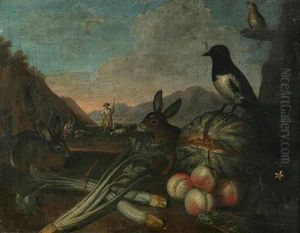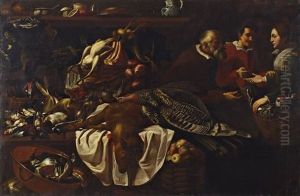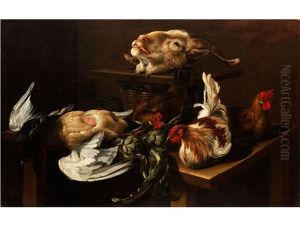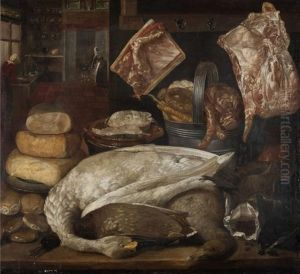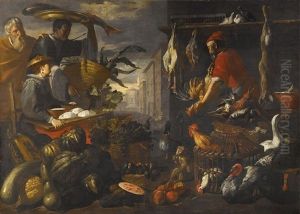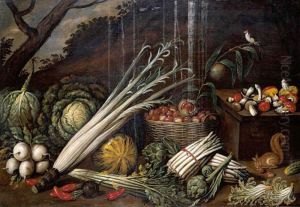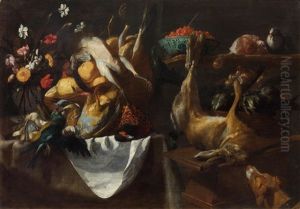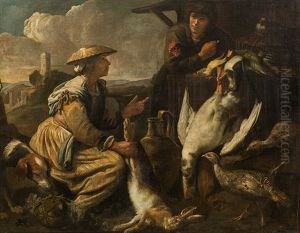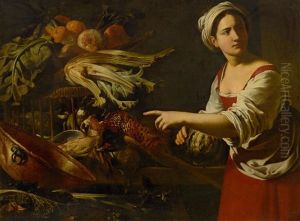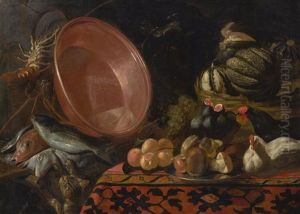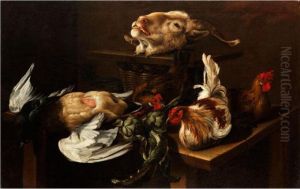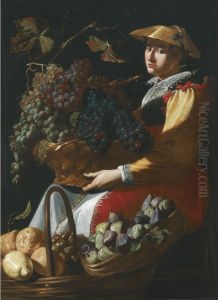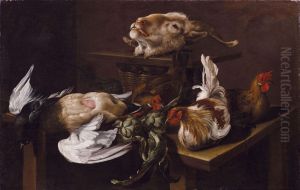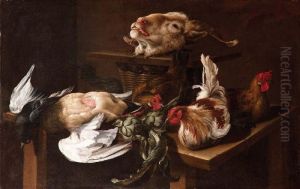Giacomo Legi Paintings
Giacomo Legi, also known as Jacques Legi, was a Flemish Baroque painter who was born in Antwerp, Belgium, around 1600. Although not as widely known as some of his contemporaries, Legi made significant contributions to the genre of still-life painting during the Baroque period. His work is characterized by a meticulous attention to detail and a rich, vibrant use of color, which was typical of the Flemish Baroque style.
Legi's artistic education and early career remain somewhat obscure, but it is likely that he trained with a local master in Antwerp, which was a major center for artistic production during the 17th century. Antwerp was home to the Guild of Saint Luke, an association of painters, sculptors, and other artists, and Legi would have been part of this vibrant artistic community.
He is known for his still-life compositions, which often featured fruit, flowers, and sometimes dead game, arranged in opulent settings. His paintings typically included dramatic contrasts of light and shadow, which added a sense of depth and volume to the compositions. Legi's work was influenced by other Flemish artists such as Jan Davidsz. de Heem and Daniel Seghers, who were masters of the still-life genre.
Despite his talents, Giacomo Legi did not achieve widespread fame during his lifetime. His works were often overshadowed by those of his more famous peers. However, his paintings were appreciated by knowledgeable collectors and connoisseurs who prized the technical skill and visual appeal of his compositions.
Legi's career was relatively short, as he died in 1640, at the age of approximately 40. The location of his death is not well-documented, but it is presumed that he spent most of his life in the city of his birth. Since his death, Legi's paintings have been recognized for their contribution to the development of still-life painting, and they can be found in art collections and museums around the world. His legacy endures as part of the rich tradition of Flemish Baroque painting, and his works continue to be studied and admired for their beauty and technical precision.
